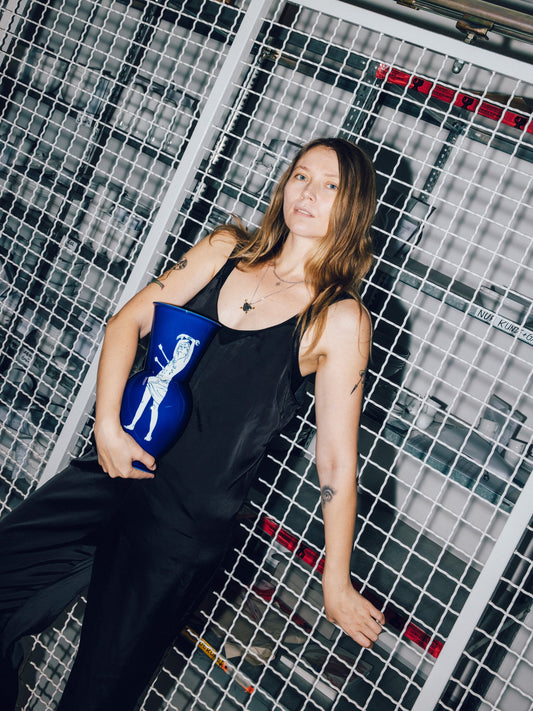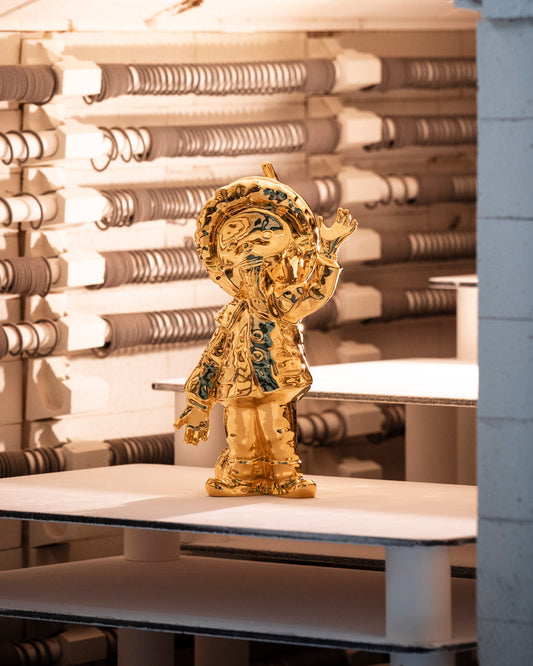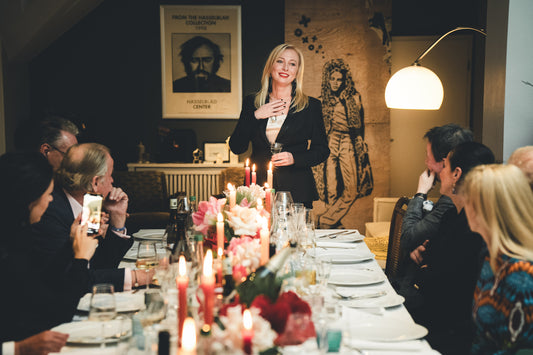THE "BOÎTE DE LOUISE" TREASURE BOX
Together, industrial designer Hermann August Weizenegger and KPM head designer Thomas Wenzel developed the fascinatingly versatile "Boîte de Louise" treasure box. Find out the idea behind the strictly limited edition jewelry box, why KPM Berlin was the right partner for its realization and much more in the interesting interview with Hermann August Weizenegger...
You regularly cooperate with traditional and regional production facilities. What goal are you pursuing with this?
Weizenegger: It is very important to me personally to use contemporary design to draw attention to people's craftsmanship and skills. Many manufactories have grown over decades or even centuries and in some cases generations of families work in the businesses. This is why there is a strong identity with craftsmanship and the region. As an industrial designer, it is a great enrichment to immerse myself in the respective industries, to develop a dialog and, in the best case, an object that best reflects the DNA of the manufactory. What I like about regional production is that it creates an economy of proximity, a circular culture, as I have demonstrated with some Berlin and Brandenburg companies.
Do you have criteria according to which you select your cooperation partners?
Weizenegger: I have a guiding principle: what counts is the bottom line and quality has top priority. Furthermore, production is extremely important to me. As a designer, I want to be able to get to know the production and the craftsmen personally, to get a connection to the material and production. I have cultivated long-standing friendships from many projects, which I see as a great privilege in my work.
What is the idea behind the"Boîte de Louise" treasure box?
Weizenegger: The idea was to design a jewelry box with a minimalist and simple appearance. Thanks to a transparent lid and the pressed facets, the inside of the box is only slightly visible. There is something mystical and mysterious about this. I think the black box with the gold is perfect, it has a function, but at the same time it is also a very decorative object that can be placed anywhere. The glass lid is a little invention of mine. I came across the old and almost extinct tradition of glass chandelier production and had the glass lids pressed by hand using simple tools. The size of the lids and the volume of the glass are perfectly adapted to the size of the tools and the kiln. This was also the idea for the facets, which are intended to refract the light but also require less glass mass. The lid was then vaporized in smoky grey to make the inside appear even more mysterious.
Did the design come first and then KPM Berlin as a partner or vice versa?
Weizenegger: I created the design as part of my solo exhibition "Atmosim - Shaped Atmospheres", which was shown at the Kunstgewerbemuseum Berlin from 2020 to 2021. The exhibition had 24 stations, one of which was a beauty installation. I designed a jewelry or treasure box for it without first thinking about the production partner. I then got in touch with KPM with my initial design idea. I think it's great that many local manufacturers are involved in a Berlin exhibition.
Why is KPM Berlin the right partner for this piece?
Weizenegger: KPM was an obvious partner for me to realize this design. I knew that it would be a big challenge to produce an exactly round porcelain cylinder so that the glass lid would fit perfectly. I have to say that the head designer Thomas Wenzel thankfully helped me a lot here, because he knew how to produce a precise circle in the end. The use of diamond cutting and polishing machines was a very helpful processing method. It was clear that we needed to talk to experts, without whom this perfection would not have been possible.
How can we imagine the design development process at your company?
Weizenegger: I generally take two approaches. The first is that I work with a company and look at the production in advance and realize a design from this context. In the second, the design is the result of research, such as visits to trade fairs or meetings at research institutes. This often involves a new technology or process. In my studio, I then think about how I can transfer this innovation into a product and which company would be a suitable partner. The jewelry box shows a symbiosis. In addition to porcelain, two other productions were used to bring such an innovative idea to the market.
The "Boîte de Louise" treasure box is an exclusive new product limited to 100 pieces. Do you have a favorite piece from our existing range?
Weizenegger: I particularly like the URBINO service by Trude Petri. For me, the designer is a pioneer of product design. The form and the system concept of this collection is a modern classic that shows how form and function can come together in the most beautiful way. In my opinion, the service is the first system tableware in which the design was incredibly free, i.e. the lid of the bowl is also an inverted bowl, the handle becomes the foot etc.. The concept is simply fantastic. This also shows that KPM has always been open not only to the historical, but also to the modern and has always allowed innovative design approaches in its history. I think the design of my "Boîte de Louise" treasure box is a continuation and thus a living tradition.


